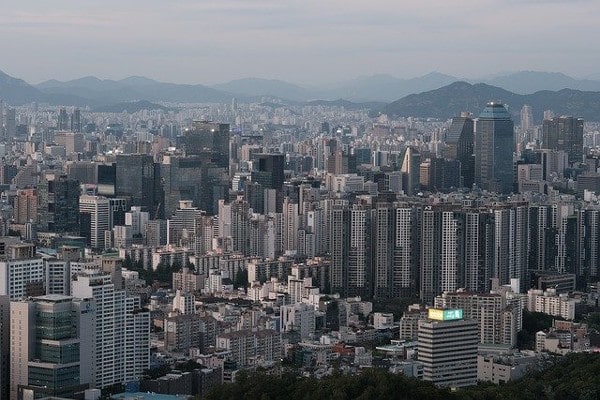Economic and financial concerns and a renewed spate of lockdowns in China hampered commercial property deal activity in Asia Pacific in the second quarter of 2022, the latest Asia Pacific Capital Trends report from MSCI Real Assets, a part of MSCI, showed.
Investment totaled US$45.1 billion in the second quarter, representing a 24% decline year-over-year. This was led by a sharp decline in trades of individual properties, which totaled only US$33.1 billion for the quarter, compared to an average of more than US$40 billion per quarter for most of 2021.
In addition to the decline in volume, the number of deals and active buyers both fell, by slightly bigger margins, demonstrating that liquidity in the region has taken a hit, according to MSCI Real Assets.
Benjamin Chow, Head of Asia Real Assets Research at MSCI, said: “The rising interest rate environment has taken its toll on deal activity in a number of core markets. Rising borrowing costs have squeezed out smaller buyers, as evidenced by the fact that deals under US$50 million fell the most across all measures of activity. On the other hand, big global institutions and cross-border players, who are relatively less affected by these headwinds, remained much more active in the second quarter.”
Across the major income-producing property sectors, industrial fared worst with transaction volume in the second quarter tumbling by 62% compared to a year earlier to US$7.2 billion. With yields on industrial property shrinking with the market’s prior surge and borrowing costs now climbing in many markets, spreads have been squeezed. Even so, industrial volume for the first half of the year was still the second highest level on record, behind 2021.
The office sector posted increased deal volume in Q2 2022, reaching US$22.1 billion, a 9% year-over-year improvement. Momentum swung to suburban offices, which constituted almost half of all office investment for the first half of the year.
Retail investment did not fare so well. Purchases of shopping centers in the second quarter fell by 30% against a robust Q2 2021. Deal volume for shops declined marginally and activity in this sector overall dropped 26% year-over-year.
David Green-Morgan, Head of Real Assets Research at MSCI, said: “The industrial sector’s fall from grace was one of the biggest stories of the quarter, as elevated pricing and the sharp rise in borrowing costs combined to stall momentum. Instead, the focus has switched back to the office sector, with the majority of the region’s biggest investors piling into the asset class this year.”
South Korea emerged as the region’s biggest market in the second quarter, while Seoul was the most active metro. Deal volume fell by 19% to US$9.7 billion, while investment activity year-to-date was flat year-on-year. Year-to-date investment continued to be dominated by domestic investors, although several large deals due for completion later in the year have secured major cross-border backers.
The office sector, which has been on a hot streak since the start of 2021, finally lost steam this year. Office volumes fell by a third, while price growth of large offices finally tapered off within the quarter. On the other hand, activity in both the retail and logistics sectors posted year-over-year gains in the second quarter.
Benjamin Chow said: “With office pricing soaring at double-digit rates through most of last year, investors are increasingly turning to newer submarkets. Both Seongsu-dong in Seoul and Bundang-Pangyo have come to the fore this year, even as deal activity in the YBD and traditional CBD has slipped. Gangnam continued to be the epicenter for office investment, with private capital and corporates continuing to acquire smaller office buildings.”
Australia wasn’t immune to concerns over increasing borrowing costs and weakening economic growth in the second quarter. The volume of deals priced US$10 million and greater fell by 26% to US$8.4 billion. This decline derived primarily from a sharp drop in industrial investment, with momentum stalling once interest rate hikes began to kick in this year. On the other hand, Australia’s office sector posted a healthy year-over-year gain in the second quarter, while the hotel sector received a record level of investment for a first half.
David Green-Morgan said: “As with the rest of the region, bigger deals are holding up much better in Australia, even as volumes of smaller deals have contracted considerably. Global investors continue to focus mainly on Sydney, which registered the second highest amount of cross-border investment across the region, behind Singapore. As a result, Sydney was the only Australian metropolitan area to register significant growth throughout the first six months of the year.”
Singapore was the star in Asia Pacific’s gloomy second quarter. Volume climbed by 74% to reach US$5.6 billion, the highest tally ever for a single quarter. Demand for property was broad-based, with CBD offices garnering the majority of investment while trades of shopping centers and hotels performed well too. Overall transaction volume reached US$7.8 billion for the first half of 2022, an increase of 53% year-over-year.
Global investors have been the driving force behind Singapore’s stellar showing this year. Offices continued to be the most sought after property type, with the sale of Income @ Raffles achieving the second highest ever price recorded for an entire office building. Across the island, transacted prices of en-bloc offices have risen by double-digits over the past year, in contrast with a more modest rise of 4% for strata office deals.
Benjamin Chow said: “Commercial real estate investment in Singapore went quiet during each of the previous two downturns, but 2022 has proven to be third time lucky with a record level of activity so far. While the broader regional slowdown has largely been attributable to fall-off in smaller deals, Singapore’s institutionally-dominated market has shrugged off the macroeconomic headwinds.”
China recorded the sharpest slowdown among the major markets of Asia Pacific, hampered by a renewed round of pandemic-related lockdowns. Deal volume tumbled 42% in the second quarter from a year earlier, to US$9.0 billion. Financial distress in the listed real estate sector continued to drive activity, with Kaisa Group and Evergrande both completing notable disposals within the quarter. Office investment grew in the second quarter, while activity plunged in other sectors.
Overseas buyers continued to focus mainly on the new economy segment, particularly logistics, data centers and business parks. Muted interest in more expensive office towers and retail malls, however, meant that total cross-border inflows fell to the lowest level since 2016.
Benjamin Chow said: “Despite both cities enduring lockdowns for much of this year, China’s political capital Beijing has lost out on investment when compared with its financial center Shanghai. Perhaps by virtue of being relatively more insulated from the turmoil in the listed real estate sector, big corporates have propped up office investment in Shanghai, zooming into emerging submarkets like the West Bund, Suhewan, and Zhangjiang. On the other hand, Beijing continues its poor run of form this year, slipping out of the top 10 most active metros.”
Japan was one of the few markets in Asia Pacific where the decline in activity slowed, rather than accelerated in the second quarter of 2022. Investment volume was down 24% year-on-year to US$6.2 billion, compared to a 33% decline in Q1 2022.
After a quiet first quarter, office investment grew by 25% year-on-year in the second, spurred by domestic investment demand. The multifamily sector retained its appeal, with sizable deals by QIA, Blackstone and Nuveen concluded within the quarter. Interest has been radiating outside of Tokyo, where occupancies have been improving across Osaka, Nagoya and Fukuoka.
David Green-Morgan said: “Japan’s market appears to be at a different point in the investment cycle compared with other leading markets in the region, where price growth has soared throughout most of last year and appears to be peaking. Prices of office towers have eased, while vacancy, which climbed throughout the Covid era, is finally stabilizing. With interest rates remaining low, overseas investors have gradually returned after a quiet first quarter.”
Deal activity in Hong Kong slumped by one-half in Q2 2022 from the same period a year earlier. Overall transaction volume reached just US$2.3 billion. The office sector took the biggest hit, recording the lowest volume and deal count for a second quarter.
Despite the region’s restrictive border measures, cross-border investors still made up over a quarter of all activity in the first half of the year. Much of their activity has focused on the industrial and hotel sectors this year, although the latter has primarily been driven by acquisitions with the intention of redevelopment.
David Green-Morgan, Head of Real Assets Research at MSCI, said: “Hong Kong’s once-mighty office sector continues to remain exceptionally quiet, with the only signs of activity at the smaller end of the market. Demand for the city’s bigger towers has dried up, illustrating the growing gulf between buyer and seller expectations amidst the market slowdown.”





















